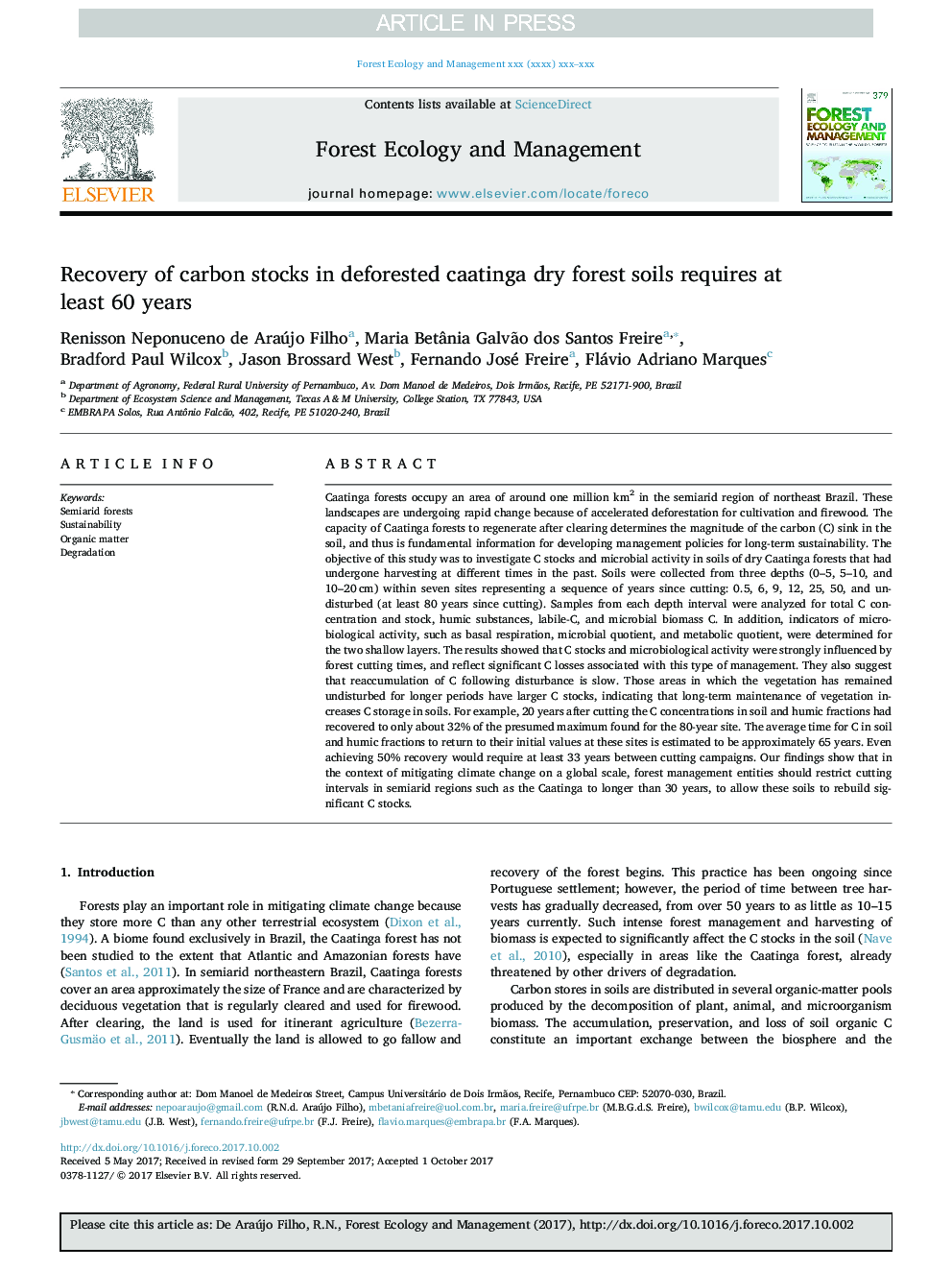| Article ID | Journal | Published Year | Pages | File Type |
|---|---|---|---|---|
| 6541996 | Forest Ecology and Management | 2018 | 11 Pages |
Abstract
Caatinga forests occupy an area of around one million km2 in the semiarid region of northeast Brazil. These landscapes are undergoing rapid change because of accelerated deforestation for cultivation and firewood. The capacity of Caatinga forests to regenerate after clearing determines the magnitude of the carbon (C) sink in the soil, and thus is fundamental information for developing management policies for long-term sustainability. The objective of this study was to investigate C stocks and microbial activity in soils of dry Caatinga forests that had undergone harvesting at different times in the past. Soils were collected from three depths (0-5, 5-10, and 10-20â¯cm) within seven sites representing a sequence of years since cutting: 0.5, 6, 9, 12, 25, 50, and undisturbed (at least 80 years since cutting). Samples from each depth interval were analyzed for total C concentration and stock, humic substances, labile-C, and microbial biomass C. In addition, indicators of microbiological activity, such as basal respiration, microbial quotient, and metabolic quotient, were determined for the two shallow layers. The results showed that C stocks and microbiological activity were strongly influenced by forest cutting times, and reflect significant C losses associated with this type of management. They also suggest that reaccumulation of C following disturbance is slow. Those areas in which the vegetation has remained undisturbed for longer periods have larger C stocks, indicating that long-term maintenance of vegetation increases C storage in soils. For example, 20 years after cutting the C concentrations in soil and humic fractions had recovered to only about 32% of the presumed maximum found for the 80-year site. The average time for C in soil and humic fractions to return to their initial values at these sites is estimated to be approximately 65 years. Even achieving 50% recovery would require at least 33 years between cutting campaigns. Our findings show that in the context of mitigating climate change on a global scale, forest management entities should restrict cutting intervals in semiarid regions such as the Caatinga to longer than 30 years, to allow these soils to rebuild significant C stocks.
Related Topics
Life Sciences
Agricultural and Biological Sciences
Ecology, Evolution, Behavior and Systematics
Authors
Renisson Neponuceno de Araújo Filho, Maria Betânia Galvão dos Santos Freire, Bradford Paul Wilcox, Jason Brossard West, Fernando José Freire, Flávio Adriano Marques,
